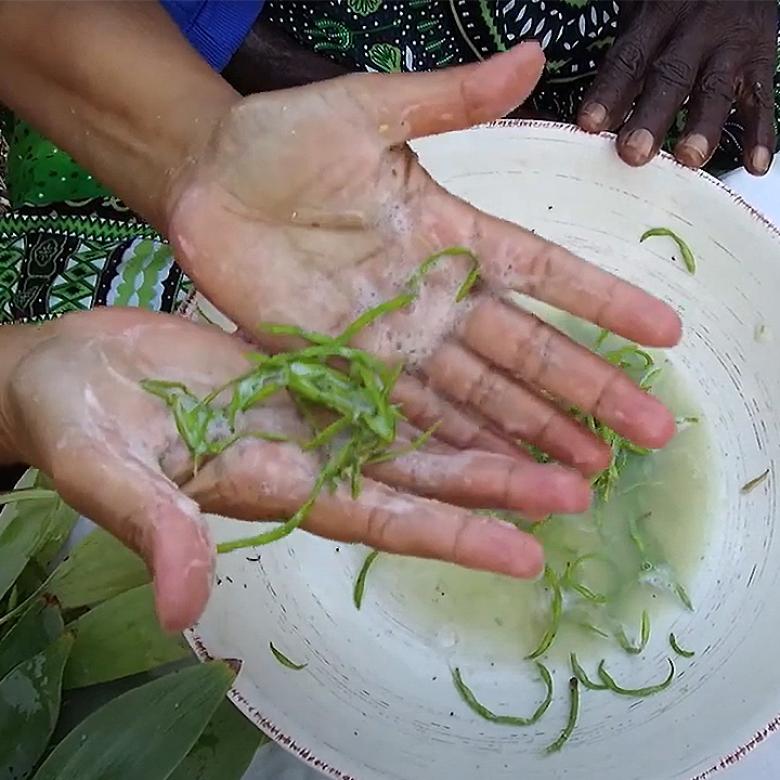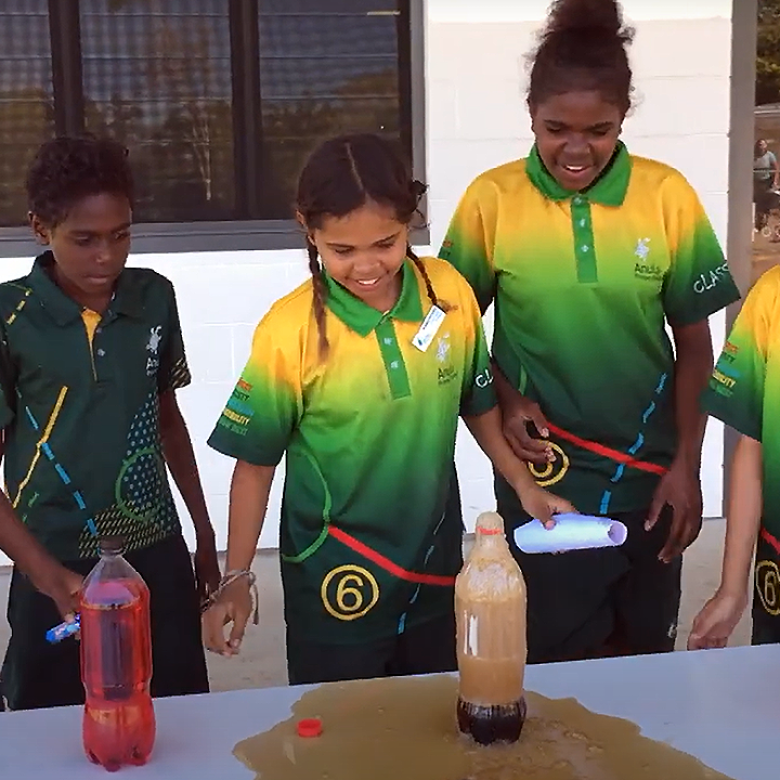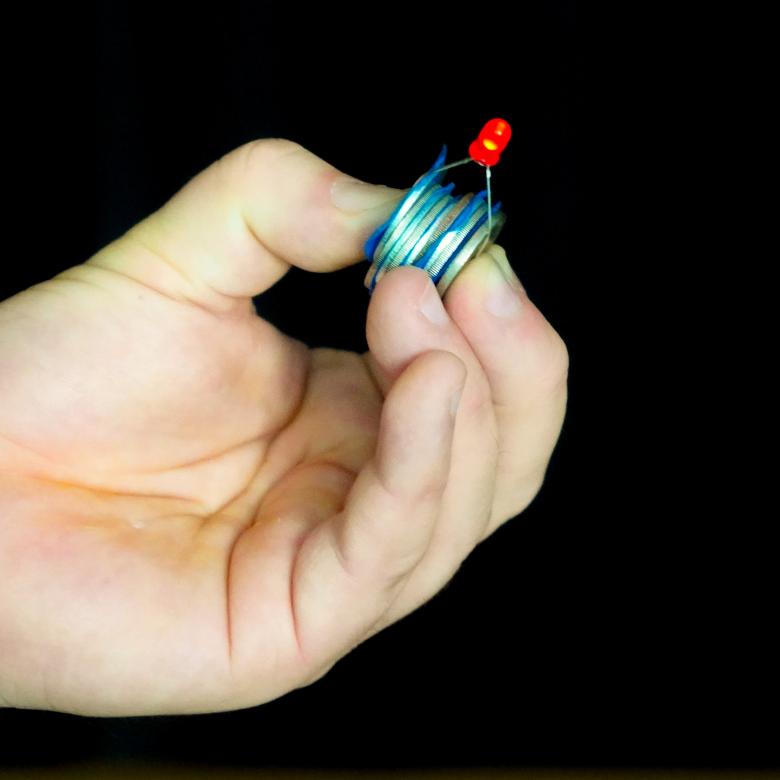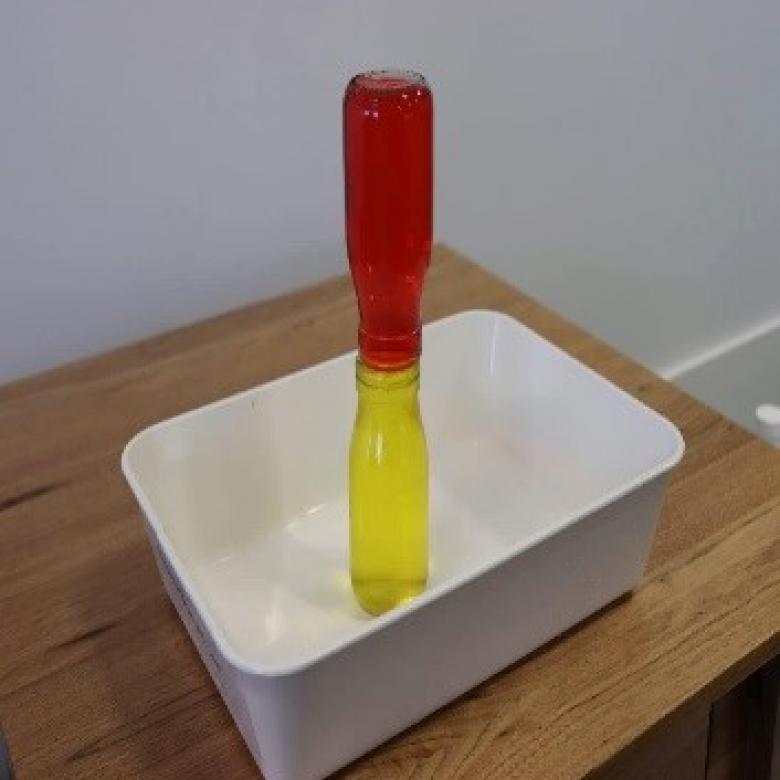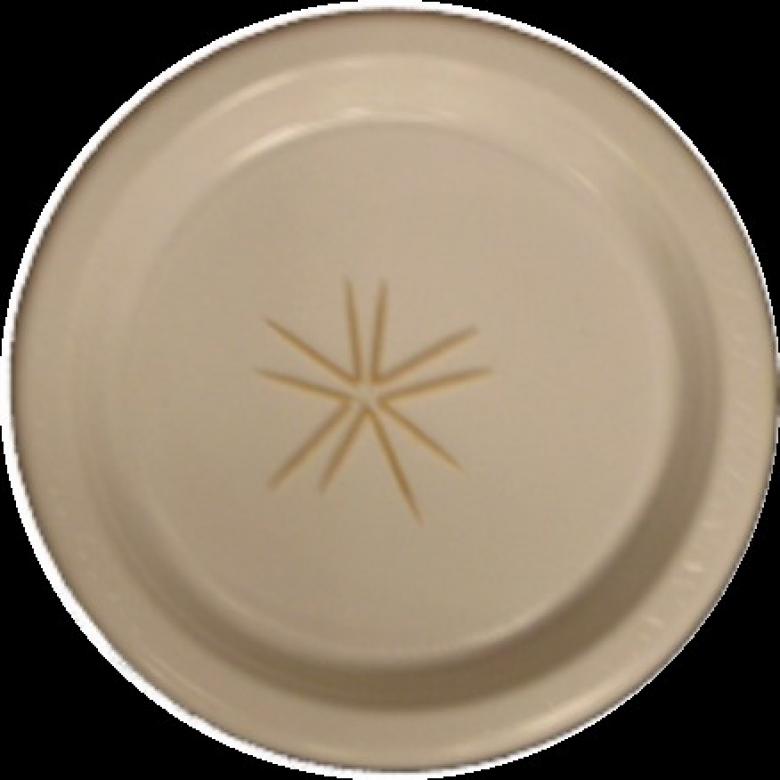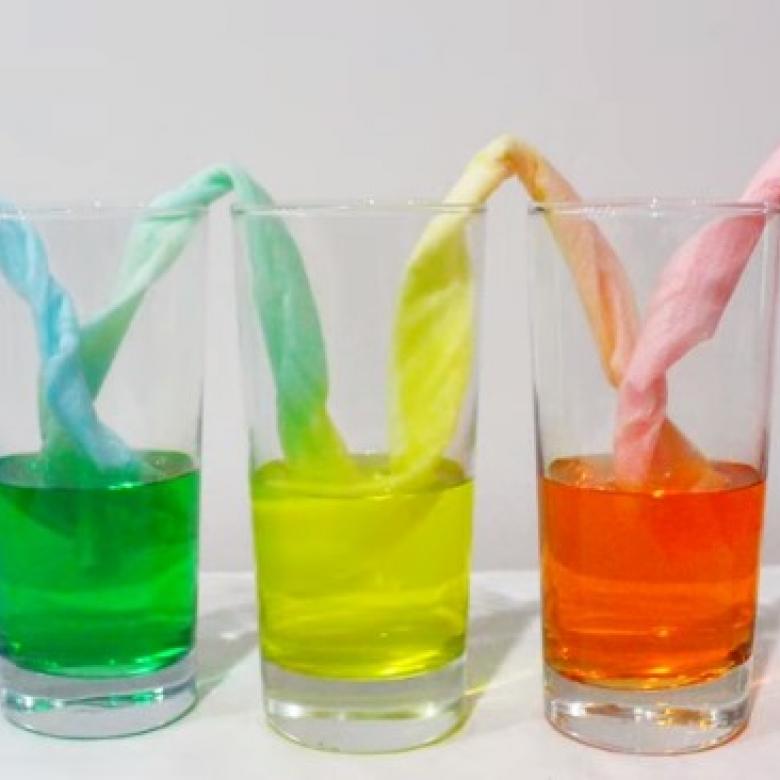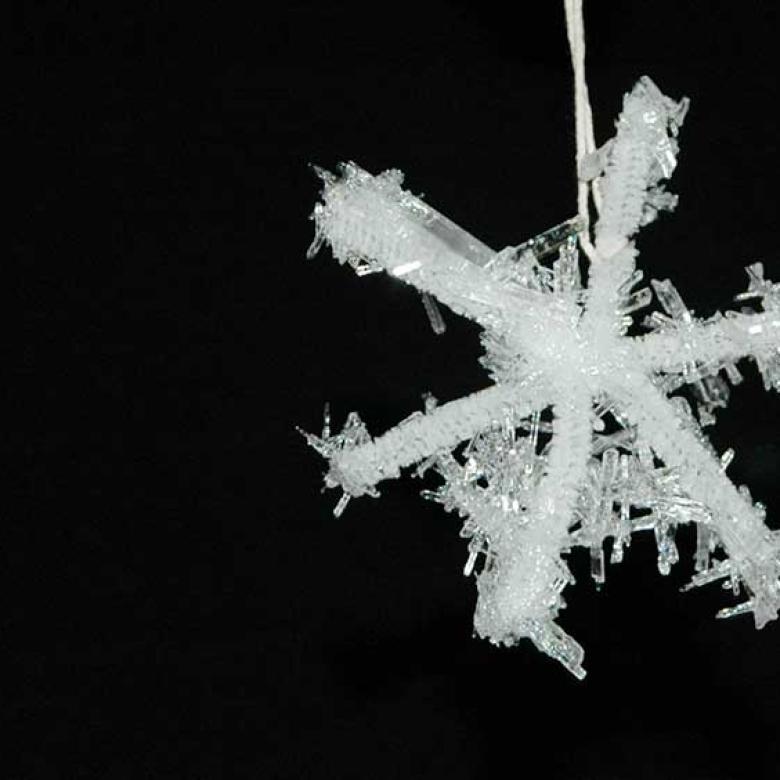You’ll need
- 1 tablespoon of icing sugar
- 1 teaspoon of bicarbonate of soda (also called bicarb soda and sodium bicarbonate)
- 1 teaspoon of powdered citric acid (you can find this in your supermarket)
- A plastic cup (or a cupcake liner)
- A spoon
What to do
- Add the icing sugar, bicarbonate of soda and citric acid to the plastic cup.
- Mix well using the spoon.
- Take a small amount of the mixture and put it in on your tongue.
Questions to ask
What could you feel on your tongue when you put the sherbet on it?
Can you make your sherbet more or less fizzy? Try adding different amounts of each ingredient (but be careful not to add too much citric acid, or your sherbet will taste very sour).
What's happening
The fizzing on your tongue is caused by a chemical reaction between the citric acid and the sodium bicarbonate. When the citric acid and sodium bicarbonate touch your saliva, they react together to make bubbles that fizz and pop in your mouth. The icing sugar makes the mixture taste nice.
This reaction is like the reaction that happens when you mix vinegar with sodium bicarbonate. When an acid (like vinegar or citric acid) is mixed with a carbonate (like sodium bicarbonate), they react to form carbon dioxide gas (also written by its chemical formula CO2), water and a salt. The carbon dioxide formed in this reaction is what makes the bubbles on your tongue.
Reactions between citric acid and sodium bicarbonate take a long time if both chemicals are powders. But if the powders are dissolved in water, the reaction goes much faster. That is why no bubbles of carbon dioxide are formed until you wet the chemicals with your saliva. Household vinegar has a lot of water in it already, so reactions with vinegar and sodium bicarbonate happen very quickly and don’t need extra water.
We can write the acid/carbonate reaction as a chemical equation:
acid + a carbonate → a salt + carbon dioxide (gas) + water
For citric acid and sodium bicarbonate, the chemical equation is:
citric acid + sodium bicarbonate → sodium citrate + carbon dioxide + water
or, using chemical formulas:
C6H8O7 + 3NaHCO3 → Na3C6H5O7 + 3CO2(g) + 3H2O
(C means carbon, H means hydrogen, O means oxygen and Na means sodium. The g means gas.)
Did you know
The breakdown of citric acid into carbon dioxide is happening right now inside your body, whether you’ve just had some sherbet or not. This reaction is part of a vital biological process called the citric acid cycle, the tricarboxylic acid cycle (TCA cycle) or the Krebs cycle, which helps turn the fuel in our bodies into energy.


